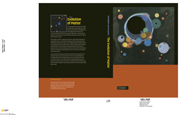Book contents
- Frontmatter
- Contents
- Introduction
- Part I The elements
- Part II Early solar system: nebula formation, evolution and lifetime
- Part III Accretion of the Earth
- 14 Introduction to the planetary system, Earth and Moon
- 15 Introduction to planetary accretion
- 16 Earth accretion: the giant impact(s)
- 17 The post-accretion silicate Earth: comparison with meteorites
- 18 Core segregation
- 19 Heavy “crust” on the top of the core
- 20 The early atmo-hydrosphere
- 21 Light from the Moon …
- Part IV Global evolution of the Earth
- References
- Glossary
- Abbreviations
- Meteorites, rocks and minerals
- Index
14 - Introduction to the planetary system, Earth and Moon
Published online by Cambridge University Press: 04 September 2009
- Frontmatter
- Contents
- Introduction
- Part I The elements
- Part II Early solar system: nebula formation, evolution and lifetime
- Part III Accretion of the Earth
- 14 Introduction to the planetary system, Earth and Moon
- 15 Introduction to planetary accretion
- 16 Earth accretion: the giant impact(s)
- 17 The post-accretion silicate Earth: comparison with meteorites
- 18 Core segregation
- 19 Heavy “crust” on the top of the core
- 20 The early atmo-hydrosphere
- 21 Light from the Moon …
- Part IV Global evolution of the Earth
- References
- Glossary
- Abbreviations
- Meteorites, rocks and minerals
- Index
Summary
The solar system: the planets and satellites
The formation of the planets and their satellites is the subject of planetary cosmogony. This is a multidisciplinary field, whose general aim is to understand the origin and evolution of planetary systems, making use of the laws of physics and chemistry, and constrained by the presently observed parameters. Mass and its distribution are indeed important: the planets all together have acquired slightly more than 0.001 of the solar mass (Fig. 14.1). However, these “small” planets are a factor of 107 to 1010 heavier than their building bricks, the planetesimals, which originated in the solar nebula in the presence of nebular gas (Part II) and are still observable on the margins of the planetary system (Jewitt et al., 1998). From this comparison it is clear that mechanisms allowing the growth of large bodies by the consumption of millions of smaller ones must have operated in the early history of the solar system.
The planets are orbiting the Sun, and the circle-like orbits are all within the same equatorial plane. Almost all the planets rotate relatively rapidly around their own axis and in the prograde direction, i.e. following the rotation of the Sun; Safronov (1966) proposed that the observed spins resulted from stochastic impacts of growing planets with large planetary embryos at a late stage of accretion.
- Type
- Chapter
- Information
- The Evolution of MatterFrom the Big Bang to the Present Day, pp. 199 - 207Publisher: Cambridge University PressPrint publication year: 2008



